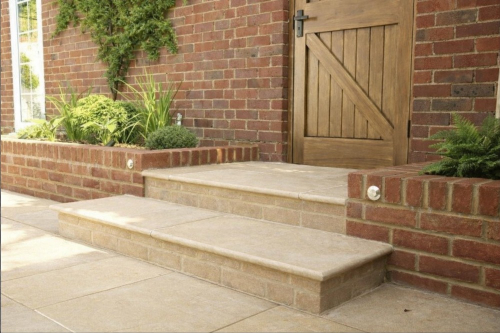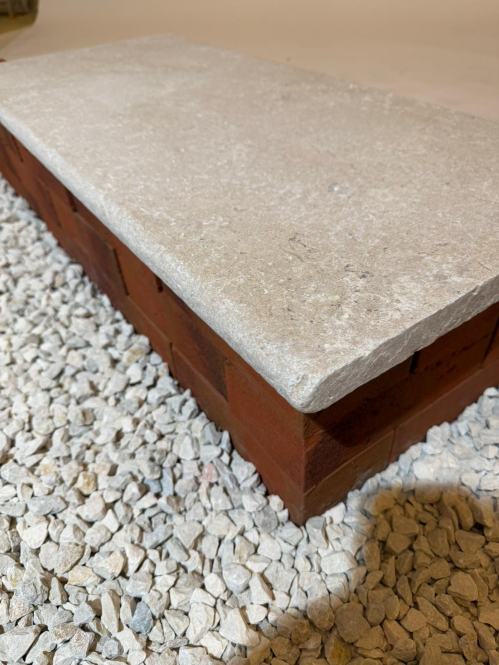Limestone Steps
Limestone steps and coping stones are an excellent way to complete your walling or landscaping project with a high-quality, luxurious finish. While some customers may choose to use standard paving slabs as coping, limestone coping stones are denser and thicker, providing a more durable and robust solution. They are ideal for topping walls, creating steps, or even doubling as seating on low walls, combining functionality with timeless natural beauty.
At Melton Stone, we offer a stunning range of limestone coping stones and steps to suit any project, from contemporary patios to traditional garden walls. Each piece is carefully crafted to ensure durability, elegance, and ease of installation.
Browse our collection today or speak to our friendly team for advice and assistance. Call us on 01482 688008 or Email sales@meltonstone.co.uk to find the perfect limestone steps and coping stones for your project.
Limestone Steps
How Thick Should Limestone Wall Copings Be?
The thickness of limestone wall copings depends on factors such as the height of the wall, the load it may bear, and the intended design. Copings act as protective caps, finishing the wall and helping to redirect water away from the structure.
Can You Use Limestone for Wall Copings?
Yes! Limestone is an excellent choice for wall coping. Its natural durability and attractive appearance make it ideal for garden walls, retaining walls, and other landscaping projects. Unlike standard paving slabs, limestone copings are thicker and more robust, providing a long-lasting, protective finish for your walls while adding a touch of elegance to your outdoor space.
What Is the Difference Between Limestone and Sandstone?
While both limestone and sandstone are popular natural stones for landscaping, they have distinct characteristics:
1. Origin and Composition:
Sandstone: A sedimentary rock made of sand-sized mineral grains held together naturally, often quarried in India.
Limestone: Composed primarily of calcium carbonate from marine organisms, forming in shallow marine environments and often containing fossils.
2. Appearance:
Sandstone: Available in buff, beige, grey, brown, green, and red, with riven, sawn, or polished surfaces.
Limestone: Found in white, beige, grey, blue, and brown, sometimes featuring fossilised shells, and can be honed, polished, or cleft-finished.
3. Porosity:
Sandstone: Generally porous and may absorb stains; some varieties require sealing.
Limestone: Also porous, with varying levels depending on type; sealing can improve durability outdoors.
4. Durability:
Sandstone: Durable and suitable for paving, patios, and garden paths, though occasional sealing is recommended.
Limestone: Hard-wearing and long-lasting, ideal for steps, copings, and outdoor paving when properly installed and maintained.
5. Applications:
Sandstone: Commonly used for patios, garden paths, and landscaping projects, appreciated for colour variety and texture.
Limestone: Perfect for steps, wall copings, patios, and formal garden layouts, offering a classic and timeless appearance.



